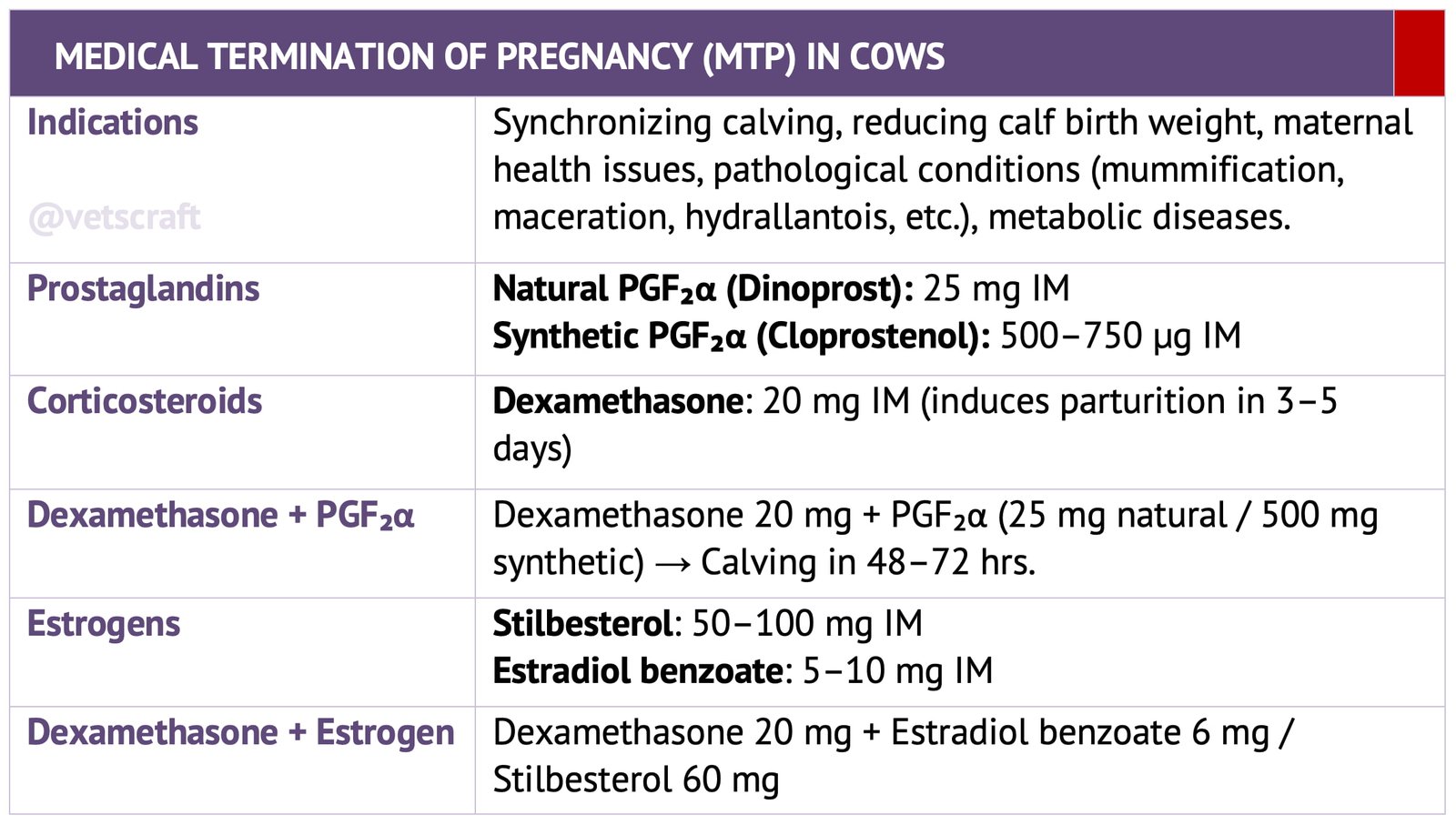TABLE OF CONTENTS
Medical Termination of Pregnancy (MTP) in Cows
Medical termination of pregnancy in cows is performed for various reasons, including fetal abnormalities, maternal health concerns, or management decisions such as unintended breeding.
Indications
- Advancing the time of calving to coincide with the availability of suitable pasture for milk production.
- Ensuring that cows calve at a predetermined time when skilled assistance is available so that prompt attention can be given. This should reduce calf mortality and injury to the cow.
- Reducing the birth weight of the calf by shortening the length of gestation. During the last weeks of gestation the growth rate of the calf is rapid. Eg. Charolais breed– 0.25 to 5 kg/day.
- In diseased or injured cows where the termination of pregnancy will alleviate the condition.
- Before slaughter where a live calf can be obtained.
- Any pathological conditions like mummification, maceration, hydrallantois, hydramnios.
- Chronic cervico vaginal prolapse
- Any lethal metabolic diseases
Drugs Used for Induction of Parturition

1. Prostaglandins
PGF2α have been widely used to induce parturition within 2-3 days post injection. Two types of PGF2α are available in the market.
- Natural PGF2α (Dinoprost tromethamine): 25 mg intramuscularly
- Synthetic PGF2α (Cloprostenol): 500–750 µg intramuscularly
2. Corticosteroids
There are three main categories based on the duration of latent period.
- Long acting (11–18 days)
- Medium acting (5–11 days)
- Short acting (1–6 days)
Short acting corticosteroids are widely used for induction of parturition. For example, Dexamethasone 20 mg IM.
If infection is present, should be given with broad spectrum antibiotics, because it is having immunosuppressive effect. The average duration of induction periods is 3-5 days post injection.
3. Combination of Dexamethasone and PGF2α
Administration of Dexamethasone 20 mg and PGF2α 25mg (natural) or 500 mg (synthetic) and calving will be expected within 48–72 hours.
Disadvantages
- The birth weight of the calf is lower, thus the subsequent growth rate is reduced.
- High incidence of placental retention (53% of the animals with corticosteroids leads to retention of placental membranes).
- Milk yield is reduced initially with a delay in peak lactation, but there is no influence on the overall yield.
- Increasing the calving to conception interval and number of services required per conception.
- Reduction in the quality and quantity of colostrums and immunoglobulins.
4. Estrogens
- 50–100 mg: Stilbesterol IM
- 5–10 mg: Estradiol benzoate
5. Combination of Dexamethasone and Estrogen
- 20 mg Dexamethasone + 6 mg of Estradiol benzoate/valerate or 60 mg of stilbesterol.

